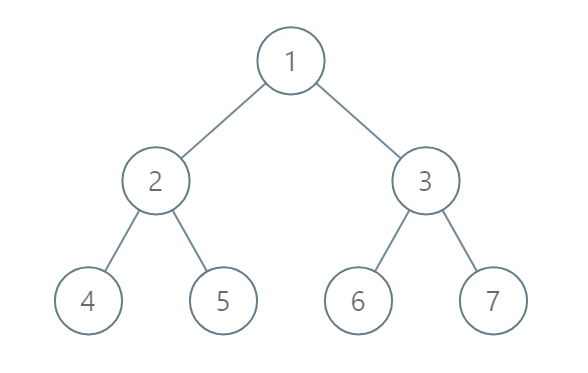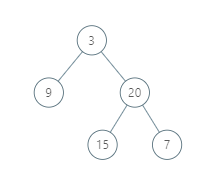leetcode---987. 二叉树的垂序遍历
本文共 1326 字,大约阅读时间需要 4 分钟。
给定二叉树,按垂序遍历返回其结点值。
对位于 (X, Y) 的每个结点而言,其左右子结点分别位于 (X-1, Y-1) 和 (X+1, Y-1)。
把一条垂线从 X = -infinity 移动到 X = +infinity ,每当该垂线与结点接触时,我们按从上到下的顺序报告结点的值( Y 坐标递减)。
如果两个结点位置相同,则首先报告的结点值较小。
按 X 坐标顺序返回非空报告的列表。每个报告都有一个结点值列表。
示例 1:
输入:[3,9,20,null,null,15,7]输出:[[9],[3,15],[20],[7]]解释: 在不丧失其普遍性的情况下,我们可以假设根结点位于 (0, 0):然后,值为 9 的结点出现在 (-1, -1);值为 3 和 15 的两个结点分别出现在 (0, 0) 和 (0, -2);值为 20 的结点出现在 (1, -1);值为 7 的结点出现在 (2, -2)。
示例 2:

输入:[1,2,3,4,5,6,7]输出:[[4],[2],[1,5,6],[3],[7]]解释:根据给定的方案,值为 5 和 6 的两个结点出现在同一位置。然而,在报告 "[1,5,6]" 中,结点值 5 排在前面,因为 5 小于 6。
/** * Definition for a binary tree node. * struct TreeNode { * int val; * TreeNode *left; * TreeNode *right; * TreeNode(int x) : val(x), left(NULL), right(NULL) {} * }; */class Solution { public: struct node { int x,y,val; }; vector vn; static bool cmp(node & a1,node & a2) { if(a1.x!=a2.x) return a1.x a2.y; else return a1.val
转载地址:http://lxki.baihongyu.com/
你可能感兴趣的文章
Node-RED怎样导出导入流程为json文件
查看>>
Node-RED简介与Windows上安装、启动和运行示例
查看>>
Node-RED订阅MQTT主题并调试数据
查看>>
Node-RED通过npm安装的方式对应卸载
查看>>
node-request模块
查看>>
node-static 任意文件读取漏洞复现(CVE-2023-26111)
查看>>
Node.js 8 中的 util.promisify的详解
查看>>
node.js debug在webstrom工具
查看>>
Node.js Event emitter 详解( 示例代码 )
查看>>
Node.js GET、POST 请求是怎样的?
查看>>
Node.js HTTP模块详解:创建服务器、响应请求与客户端请求
查看>>
Node.js RESTful API如何使用?
查看>>
node.js url模块
查看>>
Node.js Web 模块的各种用法和常见场景
查看>>
Node.js 之 log4js 完全讲解
查看>>
Node.js 函数是什么样的?
查看>>
Node.js 函数计算如何突破启动瓶颈,优化启动速度
查看>>
Node.js 切近实战(七) 之Excel在线(文件&文件组)
查看>>
node.js 初体验
查看>>
Node.js 历史
查看>>
